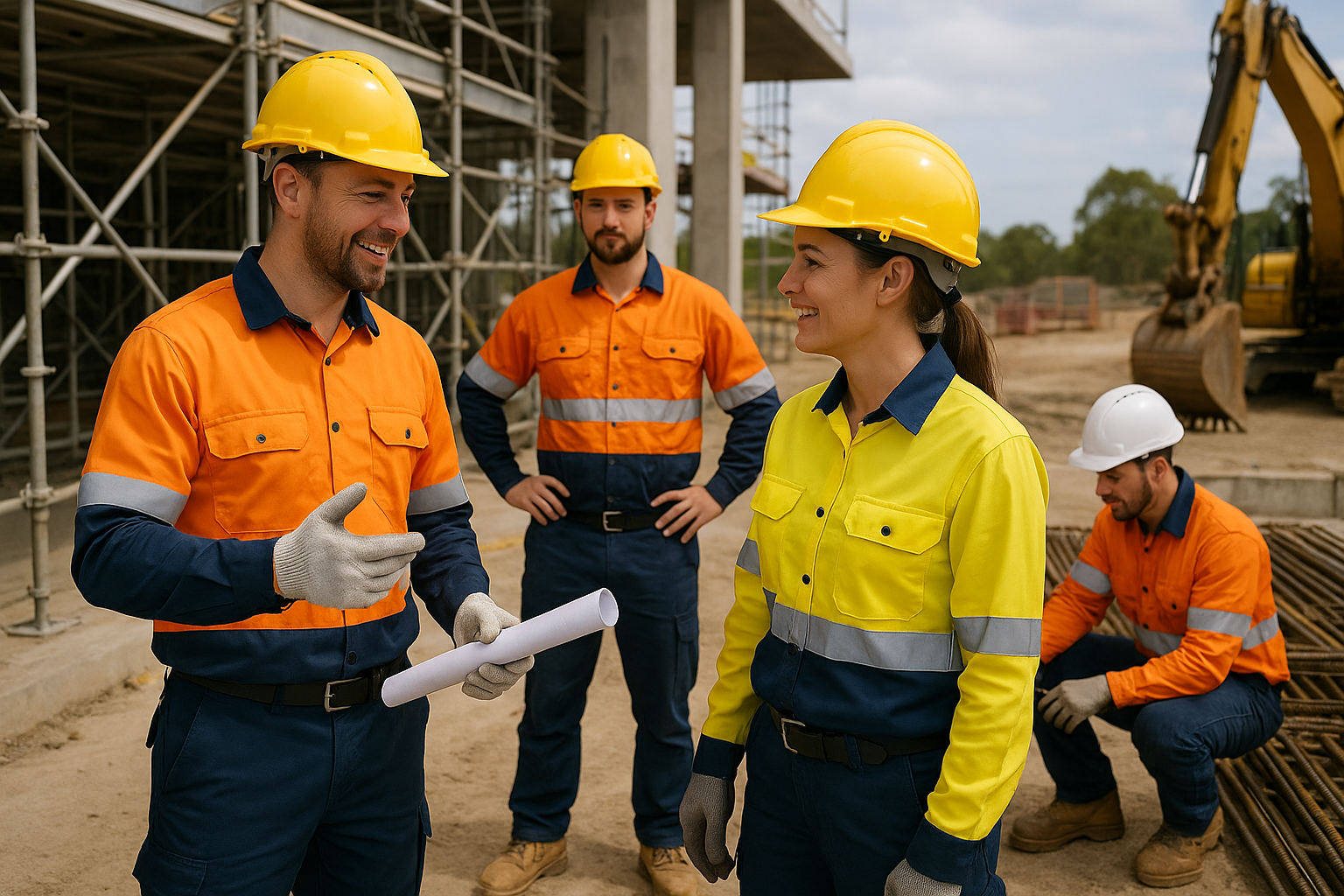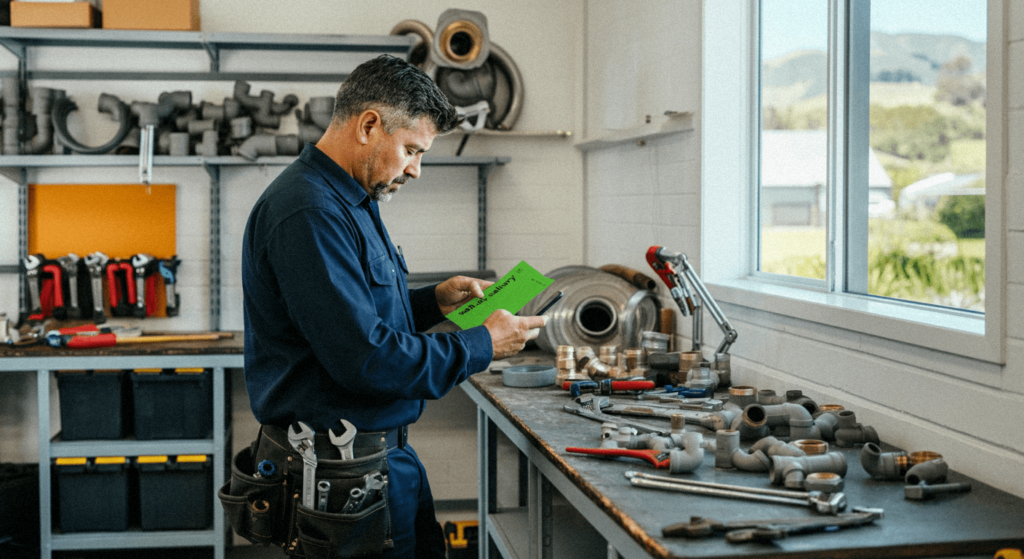Trades in Australia are crucial for the infrastructure, constructing new homes, providing important and essential services and ultimately, boosting the economy. Yet, because trade work often requires labour, is performed in dangerous conditions and uses powerful machines, the chance of Workplace Health and Safety (WHS) risks is high. Taking care of employees’ security and health is both what the law says and what is morally right for any trade business.
The information in this comprehensive guide explains the WHS meaning in Australia, covers its main elements and delivers crucial knowledge to individuals, such as employers, workers, and anyone in the sector.
WHS Meaning in Australia
Work Health and Safety (WHS), formerly known as Occupational Health and Safety (OHS), includes the laws, policies and practises set in place to protect all employees in a workplace. The Work Health and Safety Act is the same across Australia, while individual states and territories are in charge of enforcing the rules.
WHS works to prevent accidents and illnesses at work by identifying, measuring and controlling any dangers. The goal is to ensure that all team members look out for safety and everyone gets to go home safely from the site.
Why is WHS Important in the Trade Industry?
Many people believe that the trades industry is more dangerous than most other sectors. Those working in the trades are regularly required to do their job at heights, use heavy machinery, work in areas with little room, be around electricity and use risky materials. Because of these, strong Work Health and Safety measures are required.
Ignoring WHS can lead to:
- Serious Injuries and Fatalities: The most devastating consequence, impacting lives and families.
- Illnesses: Long-term health issues from exposure to dust, chemicals, noise, and repetitive tasks.
- Financial Costs: Workers’ compensation claims, insurance premiums, legal fees, fines, and lost productivity can cripple a business.
- Reputational Damage: A poor safety record can harm a business’s reputation, making it difficult to attract clients and skilled workers.
- Legal Consequences: Breaches of WHS laws can result in significant fines and even imprisonment for individuals and companies.
Key WHS Risks in the Trades Industry
Tradespeople face a wide array of hazards depending on their specific trade, but some common risks include:
- Falls from Heights: Working on roofs, scaffolding, ladders, or elevated platforms is a major risk in construction and other trades.
- Manual Handling: Lifting, carrying, pushing, and pulling heavy or awkward objects can lead to sprains, strains, and other musculoskeletal injuries.
- Plant and Equipment: Operating machinery, power tools, and vehicles carries risks of crush injuries, lacerations, and entanglement.
- Electricity: Working near or with live electrical installations is a high-risk activity that can result in electric shock, burns, and electrocution.
- Hazardous Substances: Exposure to chemicals, asbestos, dust (e.g., silica dust), fumes, and other hazardous materials can cause respiratory illnesses, skin conditions, and other health problems.
- Confined Spaces: Working in areas with limited entry and exit, poor ventilation, or potential for hazardous atmospheres (e.g., tanks, pits, pipes).
- Noise: Prolonged exposure to loud noise from tools and machinery can cause permanent hearing loss.
- Vibration: Using vibrating tools can lead to Hand-Arm Vibration Syndrome (HAVS).
- Psychosocial Hazards: Stress, fatigue, bullying, and long working hours can impact mental health and contribute to accidents.
- Environmental Factors: Working in extreme heat or cold, rain, or wind can increase risks.
Legal Obligations: Who is Responsible?
Under Australian WHS laws and regulations, both employers and employees are required to look after health and safety at work. The main obligation for care falls to the Person Conducting a Business or Undertaking (PCBU) such as employers, self-employed individuals and supervisors at a workplace.
PCBU Responsibilities:
- Ensure, so far as is reasonably practicable, the health and safety of their workers and any other persons influenced by their work.
- Provide a safe work environment, including safe systems of work, safe plant and structures, and safe use and handling of substances.
- Provide adequate facilities for the welfare of workers.
- Provide information, training, instruction, and supervision necessary to protect workers from risks.
- Monitor the health of workers and the conditions at the workplace.
- Consult with workers on WHS matters.
- Ensure that other persons are not exposed to health and safety risks arising from the business or undertaking.
Worker Responsibilities:
- Take reasonable care for their own health and safety.
- Take reasonable care that their acts or omissions do not adversely affect the health and safety of other persons.
- Comply, so far as they are reasonably able, with any reasonable instruction given by the PCBU.
- Cooperate with any reasonable policy or procedure of the PCBU relating to WHS.
Other duty holders may include designers, manufacturers, importers, and suppliers of plant or substances used in the workplace.
Managing WHS Risks: A Step-by-Step Approach
Effective WHS management follows a systematic process:
- Identify Hazards: Proactively find things or situations that could cause harm. This involves workplace inspections, consulting with workers, reviewing incident reports, and staying informed about industry-specific risks.
- Assess Risks: Evaluate the likelihood of a hazard causing harm and the potential severity of that harm. This helps prioritise which risks need to be controlled first.
- Control Risks: Implement control measures to eliminate or minimise risks so far as is reasonably practicable. The Hierarchy of Control should be applied:
- Elimination: Remove the hazard completely (e.g., use pre-fabricated components instead of cutting on-site).
- Substitution: Replace the hazard with a less hazardous alternative (e.g., use a less toxic cleaning product).
- Isolation: Separate the hazard from people (e.g., use barriers around a hazardous area).
- Engineering Controls: Implement physical or mechanical controls (e.g., install machine guards, use local exhaust ventilation).
- Administrative Controls: Change work practises or procedures (e.g., job rotation, safe work procedures, training).
- Personal Protective Equipment (PPE): Provide and ensure the use of appropriate PPE (e.g., hard hats, safety glasses, gloves, steel-capped boots). PPE is the least effective control and should be used in conjunction with higher-level controls.
- Review Control Measures: Regularly check if control measures are effective and make adjustments as needed. This is an ongoing process.
For high-risk construction work activities (as defined in the WHS Regulations), a Safe Work Method Statement (SWMS) is mandatory. An SWMS details the high-risk work activity, the hazards and risks involved, and the control measures to be implemented.
Training, Instruction, and Supervision
Adequate training, instruction, and supervision are fundamental to a safe workplace in the trades. Workers must be trained in:
- Safe work procedures for their specific tasks.
- The correct use and maintenance of plant, equipment, and tools.
- The safe handling and storage of hazardous substances.
- Emergency procedures, including first aid and evacuation.
- How to identify and report hazards and incidents.
- The proper use and limitations of PPE.
Supervision should be appropriate to the level of risk and the experience of the worker. New or inexperienced workers require closer supervision.
Consultation and Participation
Effective WHS relies on open communication and consultation between PCBUs and workers. Workers have valuable insights into the risks associated with their jobs and the effectiveness of control measures. Consultation should occur when:
- Identifying hazards and assessing risks.
- Making decisions about control measures.
- Planning changes that may affect WHS.
- Making decisions about WHS procedures.
This can be done through toolbox talks, safety meetings, WHS committees, or elected Health and Safety Representatives (HSRs).
Specific WHS Considerations for Different Trades
While general WHS meaning is the principles apply across all trades, specific hazards and control measures are relevant to different occupations:
- Construction: Falls from heights, excavation risks, mobile plant, structural stability, asbestos, silica dust, noise, and working in varying weather conditions.
- Electrical: Electric shock, arc flash, working at heights, confined spaces, and specific requirements for testing and tagging electrical equipment. Only licensed electricians should perform electrical work.
- Plumbing: Exposure to hazardous substances (chemicals, sewage, asbestos), working in confined spaces, hot work, manual handling, and working near electrical services.
- Fabrication/Welding: Fumes and gases, UV radiation, burns, fire risks, noise, and manual handling.
- Painting: Exposure to solvents and lead (in older paint), working at heights, and respiratory hazards.
Tradespeople often work on multiple sites, requiring site-specific risk assessments and adherence to the WHS management plans of the principal contractor (if applicable).
The Role of Safe Work Australia and State/Territory Regulators
Safe Work Australia oversees the development of Australia’s model WHS laws, codes of practise and guidance documents. They join forces with governments at the state and territory levels to ensure the same WHS laws across the country.
Still, it is up to state and territory WHS officials to enforce these laws (for example, SafeWork NSW, WorkSafe Victoria, Workplace Health and Safety Queensland). These regulators conduct inspections, investigate incidents, and can take enforcement action, including issuing notices and prosecuting breaches.
Trade businesses and their workers must make sure they are aware of the WHS meaning, the related laws and where they are operating.
The Benefits of a Strong WHS Culture
Investing in WHS is an investment in your business and your people. The benefits of a strong WHS culture include:
- Reduced Injuries and Illnesses: The most important outcome, protecting your workforce.
- Lower Costs: Reduced workers’ compensation premiums, fewer lost time injuries, and increased productivity.
- Improved Morale and Retention: Workers feel valued and safe, leading to higher job satisfaction and reduced staff turnover.
- Enhanced Reputation: Demonstrating a commitment to safety attracts clients and builds trust.
- Increased Efficiency: Safe workplaces are generally more organised and efficient.
- Legal Compliance: Avoiding costly fines and legal action.
WHS in the Australian trades industry is a dynamic and critical area. By understanding the risks, fulfilling legal obligations, implementing effective risk management processes, providing comprehensive training, and fostering a culture of consultation, trade businesses can create workplaces where safety is paramount. Prioritising WHS is not just about compliance; it’s about protecting lives, ensuring business continuity, and contributing to a safer and more prosperous future for the Australian trades. Stay informed, stay vigilant, and make safety your number one priority on every job.




